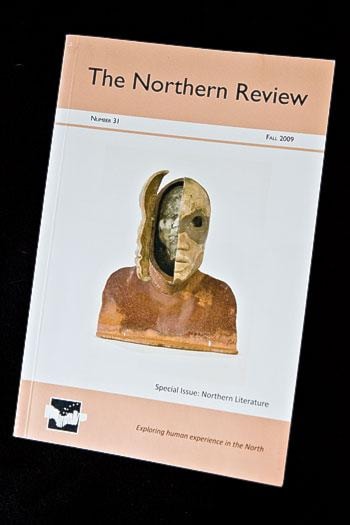When The Northern Review put out a call for northern writing, it received what you might expect:
Submissions rife with northern cliche.
Some of the work was just a bad imitation of Jack London or Robert Service - a pair University of Alaska Fairbanks English professor Eric Heyne refers to as “the same-sex parents of northern literature.”
But this type of work was in the minority.
The majority of the work was of an incredibly high quality, contemporary and challenging.
The resulting issue is a literary collection that redefines what it means to write about the North.
The Northern Review’s special northern literature issue (number 31) hit the shelves this fall.
It’s been 17 years since the journal has last put out a special literary issue.
Heyne was a guest editor on that first literary issue and returned as guest editor this time around too.
Compared to its predecessor, this issue is a little bit fatter, stuffed with more material.
But northern writing hasn’t only increased in quantity, said Heyne.
“The quality of the writing is higher and I think that reveals how the quality of writing has been improving in the North.”
Creative writing programs have sprung up in Anchorage, Fairbanks and Whitehorse.
And the growing legions of northern writers have come to realize that to be really interesting, especially to readers in the North, northern writing has got to go beyond the cliches.
The Northern Review has many examples of this, said Heyne.
“There are some pieces that I think readers will find startling and surprising.”
Kyle Mellen’s Killing Me is a shocking look inside the mind of a pedophile who’s hiding out in Alaska.
It’s not a pretty image of the North.
But the story evokes the old idea that the North is a remote frontier that attracts all sorts of colourful misfits and outsiders.
This aspect of the North can often be sugar coated and romanticized.
But it’s awfully hard to romanticize a pedophile hanging around a playground, staring at the kids.
Lily Gontard’s story The Fighter is another example of northern writing that doesn’t fit the mold.
Its protagonist is a young man who works as hired muscle for small town criminals.
In the beginning of the story, he talks about some of the things he’s learned from watching his favourite film: Fight Club.
The story shows how popular culture is affecting people’s self image, Heyne pointed out.
“We’re not immune from popular culture up here - we’re long past the days when we only got one or two television channels,” he said.
“We may be even more dependent on being wired in because we’re so isolated.”
The last special literary issue required that all of its contributors be located in the North.
This time around, only the subject matter had to be northern and writers could submit from everywhere.
There were a few far-flung submissions.
One entry came from New Zealand and a couple from the East Coast of the US.
One very interesting set of submissions came from a scientist who had done some fieldwork in the North.
But most of the submissions came from the Yukon and Alaska - more specifically, from Whitehorse and Fairbanks.
“I wish we’d done a better job of reaching out to Eastern Canada and, in my case, even to Anchorage,” said Heyne.
“And I’m sad we didn’t get more First Nations and Alaskan Natives entries.”
There are a lot more native people writing these days and a lot of quality work being produced, said Heyne.
University of Alaska Fairbanks Native Arts professor Da-ka-xeen Mahner contributed the art for the front cover - a haunting sculpture called My Transformation.
“We would want to pursue getting native content more aggressively next time,” said Heyne.
And hopefully next time doesn’t mean another 17 years.
“I don’t think we’ll wait that long,” said Heyne.
“I think the momentum among writers is really building and there’s so much out there - we could have easily gotten more.”
Even though he’s a poet himself, Heyne decided to restrict himself to the issue’s three-page introduction.
Since he moved to Fairbanks to work for the University in 1986, the North has had a definite impact on his own writing, he said.
“I continue to write about the recurring obsession I have with the light and the seasons and how different they are,” he said.
“I haven’t been able to get over that in 23 years.”
Contact Chris Oke at chriso@yukon-news.com
